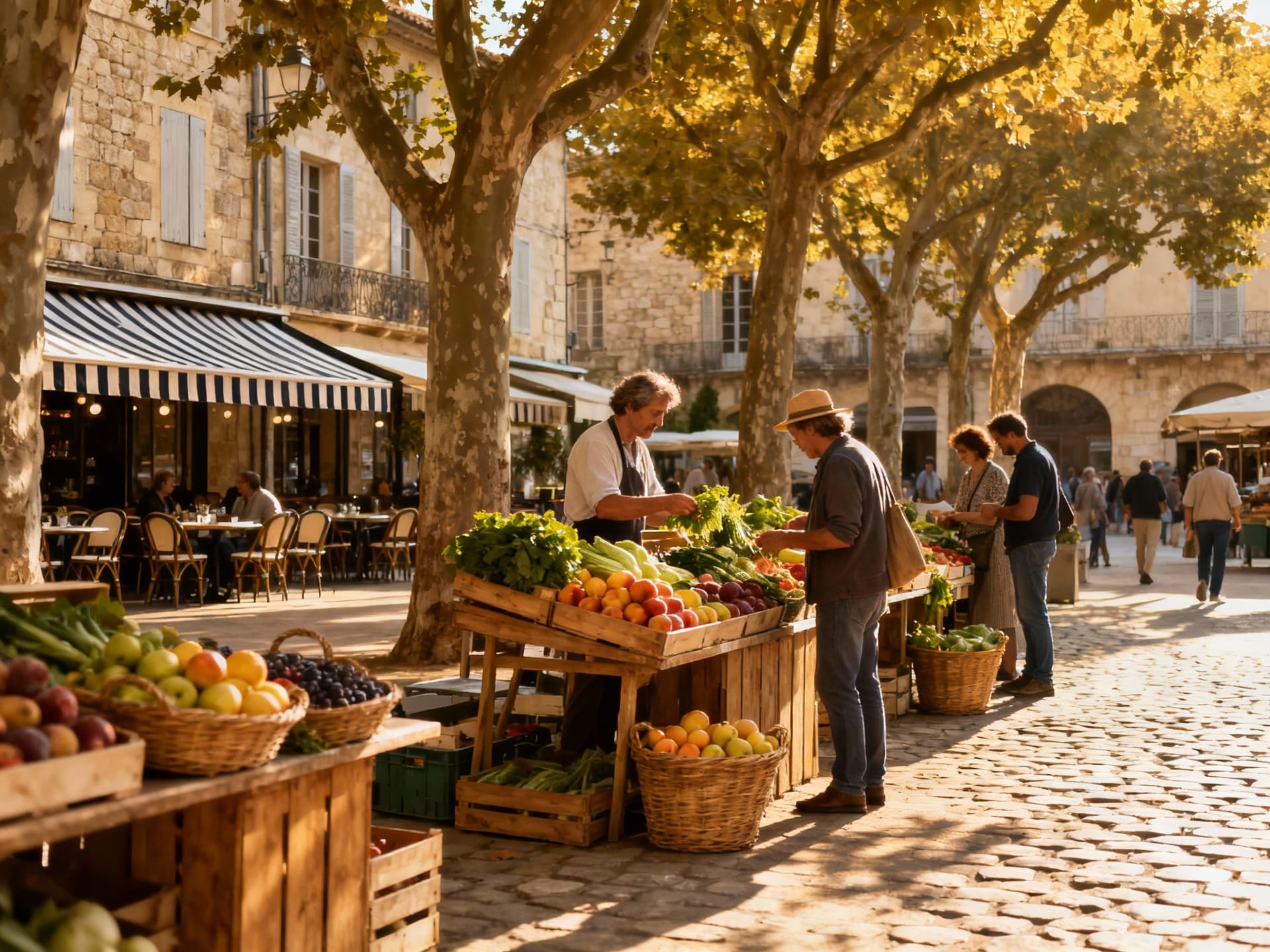Why France’s “Expensive” Label Hides Yield Opportunities
France isn’t uniformly ‘expensive’ — targeted neighbourhoods and tax-aware strategies reveal pockets where lifestyle and attractive net yields coexist for disciplined buyers.
Imagine sipping espresso on Rue des Martyrs in Paris at 9am, then driving two hours to a hilltop village in Luberon for an afternoon marché — that contrast, between lived-in neighbourhood rhythm and provincial calm, is the essence of buying property in France. Much of the outside world hears “France” and thinks Parisian eye-candy or Côte d’Azur price tags. The reality for an investor or future resident is more nuanced: pockets of high demand sit beside undervalued towns where yields and quality of life quietly outperform expectations. This piece shows where the expensive label is misleading, what to watch for in local taxes and rules, and how lifestyle and returns can coexist.
Living the France lifestyle (and why it matters to returns)

France’s rhythm — morning markets, long lunches, village fêtes and efficient regional trains — shapes occupancy, rental demand and therefore yield. Apartments near a good marché, a bilingual école or a TER line often command premium, predictable rentals to both long-stay expatriates and seasonal professionals. Understanding daily life — when shops open, how festivals swell visitor numbers, and where weekend traffic concentrates — turns aesthetic preference into an investment factor. Buying where people want to live year-round stabilises income and reduces vacancy risk.
Parisian pockets vs provincial towns: microclimates of demand
Paris remains a special case: price per m² is high but liquidity is exceptional and tenant demand deep, especially in central arrondissements and transport-connected suburbs. Yet outside Paris, towns like Rennes, Nantes, and Dijon show combination of affordability and strong local economies that produce higher net yields. The market rebound in 2025 shows national price growth but also widening regional dispersion; where Paris averages €9–10k/m², mid‑sized city centres can be 40–60% lower while offering stronger gross yields. For an investor this means trading off capital appreciation potential for immediate cashflow depending on location.
Neighbourhood flavour: cafés, markets and small details that drive premiums
Streets matter. In Marseille, the Cours Julien’s cafés and live music create year-round short-let demand; in Bordeaux, Rue Sainte-Catherine’s shopping draw supports longer lets to professionals. A two-bedroom with a balcony on a lively street near tram or métro will outperform a quieter but disconnected equivalent by reducing voids and increasing achievable rent. Buyers who visit on market day and map tenant profiles (students, commuters, retirees) make smarter underwriting assumptions than those who rely on headline city averages.
Making the move: practical considerations that preserve both lifestyle and yield

Lifestyle choices collide with French regulatory detail the moment you start budgeting. Notary (frais de notaire), local property taxes and the classification of rentals (unfurnished vs furnished) materially affect net returns. For example, acquisition costs on older properties typically add 7–8% to the purchase price while new-builds incur nearer 2–3%. Factor these into your cash-on-cash and cap-rate calculations before you fall in love with façade and beams.
Property styles and how they shape daily life (and costs)
A medieval townhouse in a village delivers atmosphere but often requires higher maintenance and insulation work; an Île‑de‑France apartment near transit gives rental flexibility with lower upkeep. Choose a property type that matches your intended use: long-term let, seasonal holiday let, or personal residence with occasional rentals. Each route changes tax treatment, insurance needs and renovation priorities — and therefore the appropriate underwriting assumptions.
Working with local experts who actually know the street, not just the postcode
A local notaire, a syndic (building manager) for apartments, and an agent who handles ex-pat rental demand are non-negotiable. Agencies grounded in the neighbourhood will flag municipal regulations — short-let registration, tourist tax obligations, or recent changes to taxe foncière — that national averages miss. Use the agent to validate rental comparables and the notaire to confirm title encumbrances; both actions prevent surprises in cashflow modelling.
- Due-diligence checklist before offer (lifestyle + financial)
1. Confirm transport links and typical commute times; 2. Inspect water, heating and insulation (running costs); 3. Ask syndic for recent charges and planned works; 4. Check local short‑let registration rules; 5. Model tax impact for furnished vs unfurnished rental regimes; 6. Verify notaire-estimated acquisition costs.
Insider knowledge: the rules, red flags and tax quirks expats usually overlook
Two recurring surprises: local tax variation and rental classification. Taxe foncière is voted by communes and can spike unpredictably; 2024–2025 saw notable increases in some municipalities, demonstrating that local politics can change the ownership equation quickly. Second, whether a let is classed as micro‑BIC or revenus fonciers affects allowable deductions and effective tax rate. These are not academic distinctions — they change net yield by percentage points.
Cultural and administrative red flags that erode returns
Watch for informal building arrangements (shared courtyards with unclear maintenance agreements), properties with unresolved servitudes, or old heating systems that will require mandatory upgrades. Overlooking these leads to surprise capital expenditure and regulatory fines. Ask neighbours about past works and request syndic meeting minutes; a small legal fee for thorough searches is cheaper than a major retrofit later.
Tax mechanics that alter yield expectations
Furnished rentals taxed under BIC often benefit from a 50% micro‑BIC allowance up to €77,700 gross, while unfurnished rentals have a 30% micro‑foncier allowance up to €15,000. Non‑residents face minimum withholding rates (commonly 20%) but can elect progressive rates in some cases; social charges treatment varies by residency and bilateral treaties. Model net yield using conservative tax assumptions — assume the higher tax bracket and include local property taxes — to avoid overestimating cash returns.
- Quick red flags to walk away from
Unclear title history, disproportionately high syndic charges, locations with single-season demand and no year-round tenants, properties requiring mandatory energy upgrades costing >5% of purchase price. Each of these reduces investable yield and increases management complexity.
What expats wish they'd known: real stories and long-term thinking
Expats often describe a learning curve: first they buy where the photos are prettiest; later they wish they'd prioritised transport links and local services. One British owner in Nantes told us she traded an extra €50k for a flat beside the tram and has had 98% occupancy across three years — a clear yield decision disguised as lifestyle preference. Long-term owners emphasise community ties: a friendly boulanger nearby and a reliable syndic reduce churn and operating headaches.
How to future-proof a French property purchase
Prioritise energy efficiency, proximity to reliable public transport and diversified tenant pools (students, local professionals, remote workers). Budget 5–8% of purchase price for immediate renovation to reach acceptable performance and rentalability standards — the market increasingly penalises poorly insulated properties. Finally, plan exit scenarios: a property that appeals to local buyers as well as international investors sells faster and with less discount.
- Six steps to balance romance with returns
1. Visit at least twice at different seasons; 2. Verify notaire-stamped acquisition cost estimates before making an offer; 3. Run two rental scenarios (conservative and optimistic) including full tax treatment; 4. Commission a syndic report and building diagnostics; 5. Confirm local short‑let rules and tourist tax liabilities; 6. Agree a plan with a local manager before completion.
France’s “expensive” reputation hides strategic opportunities for disciplined buyers who pair lifestyle priorities with rigorous financial modelling. Choose neighbourhoods that offer everyday pleasures — markets, cafés, clean transit — and cross‑check them against local taxes, syndic health and realistic rental demand. If you combine a thoughtful lifestyle brief with precise cost modelling, France can deliver both the life you imagined and predictable returns. Talk to a local notaire and a neighbourhood-savvy agent early; they translate charm into numbers and keep surprises to a minimum.
Sources: French property acquisition and notaire fee guidance, rental tax regimes and recent local tax reporting informed this analysis. See notaire fee breakdowns and acquisition cost estimates, 2024–25 rental tax thresholds and local taxe foncière reporting for municipal variation. For detailed personal advice, request a notaire’s preliminary statement and a bespoke yield model for the specific town you are considering.
Danish relocation specialist who moved to Cyprus in 2018, helping Nordic clients diversify with rental yields and residency considerations.


